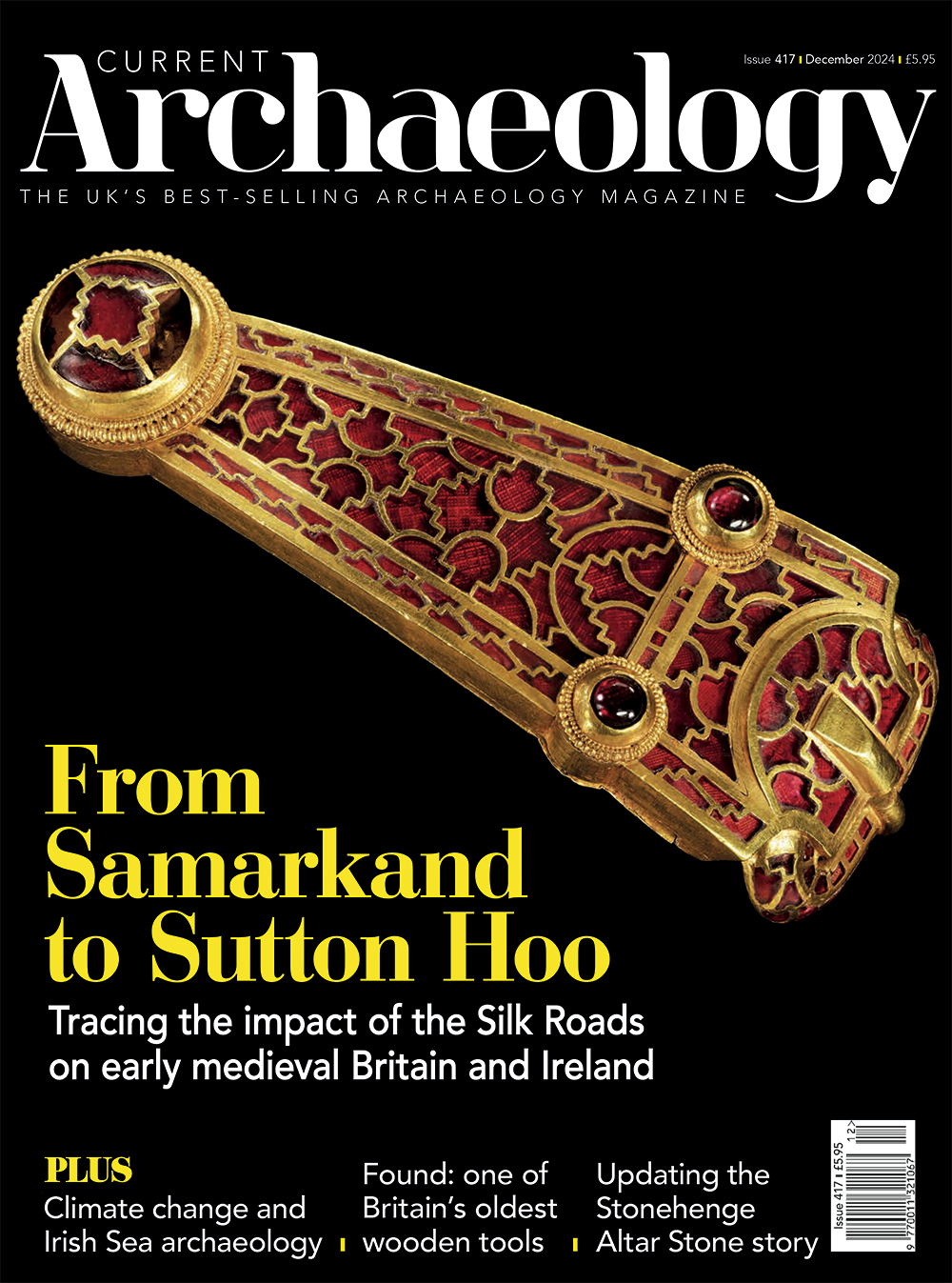It is not often that we at CA get to write about far-flung finds from such countries as Korea, Sweden, and Syria (though we love reading about them in the pages of our sister-magazine Current World Archaeology). However, in this month’s cover feature, which draws on the British Museum’s new Silk Roads exhibition, we explore how people, goods, and ideas travelled vast distances between AD 500 and 1000 to influence and inspire the inhabitants of early medieval Britain and Ireland.
We then turn to the Moors at Arne in Dorset. Rising sea levels are threatening important wildlife habitats around Poole Harbour, and so Kier, the Environment Agency, RSPB, and Natural England are working to adapt c.150ha into a new wetland environment. Archaeological work associated with this undertaking has revealed a wealth of illuminating finds, including one of the oldest and most complete wooden tools ever discovered in Britain.
Environmental matters feature in our third article, too, which highlights a joint Welsh and Irish venture that is working to assess the impact of climate change on diverse archaeological sites – from promontory forts and castles to shipwrecks and drowned forests – along the Irish Sea coast.
Finally, we return to a subject discussed just two months ago: the origins of Stonehenge’s enigmatic Altar Stone. In CA 415, we reported on research suggesting that the slab’s source lay hundreds of miles from Salisbury Plain, in the Orcadian Basin of north-east Scotland – but geological understanding has already moved on. Our final feature reveals why thinking has changed, how scientists have further narrowed their search, and what recent fieldwork in Orkney has added to our understanding.

